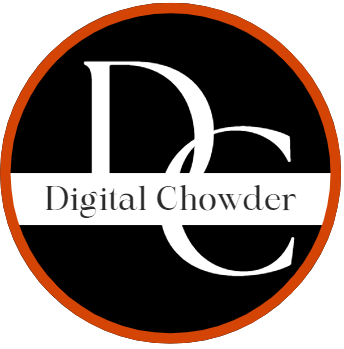Creating A Home Business With Online Teaching
Are you aware you can leverage online teaching strategies to generate significant income and build a fruitful home-based business? If you are looking for an approach to establishing an online business, teaching online is a possibility you may still need to consider. Read on to learn more.
Online teaching for a home business is becoming an increasingly popular option for entrepreneurs. The trend is towards providing high-quality, personalized learning opportunities that can be scaled and customized to each individual’s needs. Many platforms allow instructors to build ready-made curriculums or create custom ones, generating income without investing in their physical space or equipment. And you can do it from home while reaching a global market of students.
Here are some considerations you will need to think about as you determine whether online teaching is a viable option for you:
Consider Your Interests and Credentials

The starting point is to ask yourself, “What do I have to offer?” Abraham Lincoln is quoted as saying, “You can fool all the people some of the time and some of the people all the time, but you cannot fool all the people all the time.” Take this principle to heart as you consider what you have to offer.
You want to avoid attempting to bluff your way through a topic about which you have only a passing acquaintance. At least some of your more astute students will catch on. There are better ways to build an ongoing, successful business. Neither is it the way to establish a business you will love and have the drive to pursue. Your love for the subjects you teach will also become transparent to your students.
So passion is a crucial ingredient for the subjects you choose to teach. Another critical component is to have the appropriate credentials. This does not necessarily translate to formal education or certification, although these could be helpful. Your experience and grasp of the subject qualify you as well. A good question to ask yourself if your qualification is experience and/or understanding of the subject is whether or not your approach to the subject is acceptable among the experts in that subject.
If your answer to that question is either “No,” or “I don’t know,” don’t automatically eliminate that option. For example, I have had years of experience coding in PHP and MYSQL and have built many applications that work as they should. But I am self-taught, and I knew I didn’t always use “best practices” in my coding. I also knew there were shortcuts to some of my approaches, which I needed to be made aware of.
So I chose a relatively simple solution for these shortcomings. I took some online courses through Udemy from teachers who are coding experts. All I needed was a couple of courses to help fill the gaps. I learned best practices through an introductory course in which I already knew the coding techniques. And through a more advanced class, I learned coding shortcuts making my processes more efficient. Plus, the cost for these two courses was less than $50 combined.

Determine Your Target Market

Once you know what you might teach, your next step is determining if a market exists. As you consider your market, here are some additional questions you will want to answer:
- Subject – You determined your topic in the first step, but now you need to know the interest in your subject.
- Demographic – With this question, you are interested to know who will want to take your classes. The subject question asks IF there is an interest, and this question asks WHO has the interest. The demographic question includes:
- Age – Knowing the age of your potential students will be important in designing your courses and the methods you use.
- Application – How do you anticipate your students will use what they learn in your course? Knowing this will also play an essential role in the design of your courses. For instance, will they use it as a hobby or a pre-requisite for a job?
How to determine your market – You may wonder how to assess your market. Here are some ideas; you will discover others as you begin the process.
- YouTube, Rumble, etc. – These venues host many mini-courses. Search your subject to learn what is offered on these venues and the traffic they generate. You will also get ideas for methodology.
- Test videos – Making your own 5-10 minute video addressing an aspect of your subject will give you experience making videos. It will also allow you to measure the response to your topic, your approach, and how you present yourself. Unless, by chance, your video goes viral overnight, your feedback will be slow in coming. A consideration is establishing your channel, creating regular videos, and establishing yourself through this venue. Then use it to promote your online classes once you have made them. Admittedly, this is a slow approach that could take months.
- Social Media – I don’t see this as influential as the video option, but I’m also not proficient in social media. When looking for how-to help, I go to YouTube or Rumble. Nevertheless, browsing and searching social media is a potential source for market research.
- Online teaching websites – I give a list below of several online teaching sites. These sites should be invaluable to you in knowing the subject trends and popularity. They will also show what your competition might be.
Develop a Unique Teaching Style

To be successful as an online teacher, you’ll need to stand out from the competition. As such, creating a unique teaching style and model that fits your target market and builds on your strengths is essential. As you seek direction to discover your unique style, remember you are unique. So, start by being yourself and not someone else.
While remaining true to your personality and strengths, seek ways to utilize those characteristics while fitting your target market. Fitting your target market might include terms or illustrations you use, as well as ways you find to engage them. The amount of engagement will also be a consideration.
Additionally, you will have to consider not only your audience but also your venue. Unless you use live webinars, you cannot engage your students directly. A pre-recorded video is used in most settings, and engagement is built into the recording. That said, there are many visual possibilities, from using physical objects in the room with you to capturing activities on your computer screen. Problem-solving activities are another possibility. But you are certainly not limited to your imagination. Plenty of examples are available through online videos.
Design an Engaging Course Syllabus

A practical course syllabus is critical for your success as an online teacher. When designing your syllabus, consider adding components that provide added value to students, such as clear learning objectives, engaging activities, and meaningful projects. Additionally, ensure that your course schedule allows adequate time for assignments and practice quizzes to help keep students on track and motivated throughout the course.
A well-designed syllabus should provide structure and flexibility to ensure students get the most out of their learning experience. This could include clear learning objectives, meaningful activities, and engaging projects or assignments.
As you design a course, the syllabus is the starting point instead of starting with a lesson. This may seem obvious, but it is still worth stating. With a syllabus, you will declare the course’s objectives, an overall outline, and the specific lessons to complete the outline and meet the goals.
A temptation I fight with the design of almost every course I design is to jump right into the first lesson before I have done anything else. I have created a general idea for the course and gotten excited about some of the big ideas I have in mind. So when it comes time to get something in writing, I am anxious to start writing out some of those ideas. Then I fall into the trap of getting carried away with an idea and losing sight of the course’s overall objective. I haven’t even figured out what that objective should be.
Craft High-Quality, Relevant Content and Assignments

So, you identified your market and determined the nature and methodology for the content. Then you create a syllabus that will address the needs of your market in a way that will give them value. Now it is time to complete the lessons.
Each lesson will seek to meet the overall objectives while balancing content, application, and relevance to your students. It should be clear how each lesson builds on the previous one and how students can apply their learning in practical situations. Assignments should also be designed to provide a challenge but not become overwhelming. Finally, students should receive regular and timely feedback on their assignments to help them understand and retain the material for future use. Two examples of feedback might be using a quiz or a problem to solve.
Online Teaching Platforms
- Coursera – Coursera offers over 4,000 courses from top universities and industry leaders. The courses shown on Coursera are divided into three levels: beginner, intermediate, and advanced.
- Udemy – Udemy offers over 100,000 courses in a wide variety of subject areas. From coding to photography to marketing, Udemy has something for everyone.
- edX – edX was founded by leading research universities, including Harvard and MIT. It offers a wide range of courses from top universities and industry leaders and professional certification courses.
- Udacity – Udacity offers courses designed to develop and hone practical skills in data science, programming, artificial intelligence, cloud computing, and more. Learners can access a wide range of courses from top universities, industry leaders, and technology companies such as Google, AWS, IBM, and Microsoft.
- Khan Academy – Khan Academy is an online learning platform that offers free courses and resources to help learners of all ages learn, practice, and succeed. The platform provides comprehensive curriculum-based lessons in a wide range of subjects, including math, science, history, economics, and more.
- Codecademy – Codecademy is an online learning platform that provides free tutorials and resources to help learners develop coding skills. The platform offers a comprehensive curriculum-based curriculum for a variety of programming languages, including Python, Java, HTML, CSS, JavaScript, SQL, and more.
- Skillshare – Skillshare is an online learning platform that offers courses and workshops on creative, professional, and educational topics. It provides users access to lessons created by industry professionals, experts, and educators worldwide. With Skillshare, users can explore a variety of topics ranging from marketing and design to art and business.
- FutureLearn – FutureLearn is an online learning platform that allows students to access high-quality, interactive courses from top universities and institutions worldwide.
- Academic Earth – Academic Earth is an online learning platform that provides free access to courses from leading universities and institutions, including Harvard, Yale, Stanford, and MIT.
- Open Education by Blackboard – Open Education by Blackboard is an online learning platform that offers users access to free, high-quality education materials worldwide. It is a comprehensive resource for students of all ages, with content tailored to different levels and interests. The platform offers tutorials and courses on a range of topics, including humanities, social sciences, technology, math, and more.
View Video
You can view a video of the article for a more hands-on presentation.
Conclusion
Online teaching for a home business is an excellent way to generate income. With the range of online platforms available, entrepreneurs can create personalized and high-quality learning experiences tailored to their customers’ needs. By understanding how different courses build on each other, providing assignments with appropriate challenge levels, and offering feedback in various forms, instructors can ensure they provide value while earning money. With these tips in mind, you, too, can use online teaching as a source of revenue for your own home business!
Have questions or comments. Please use our comments feature below or use our contact form.


